Facing Disaster,
Seed Guardians Defend the Past and the Future
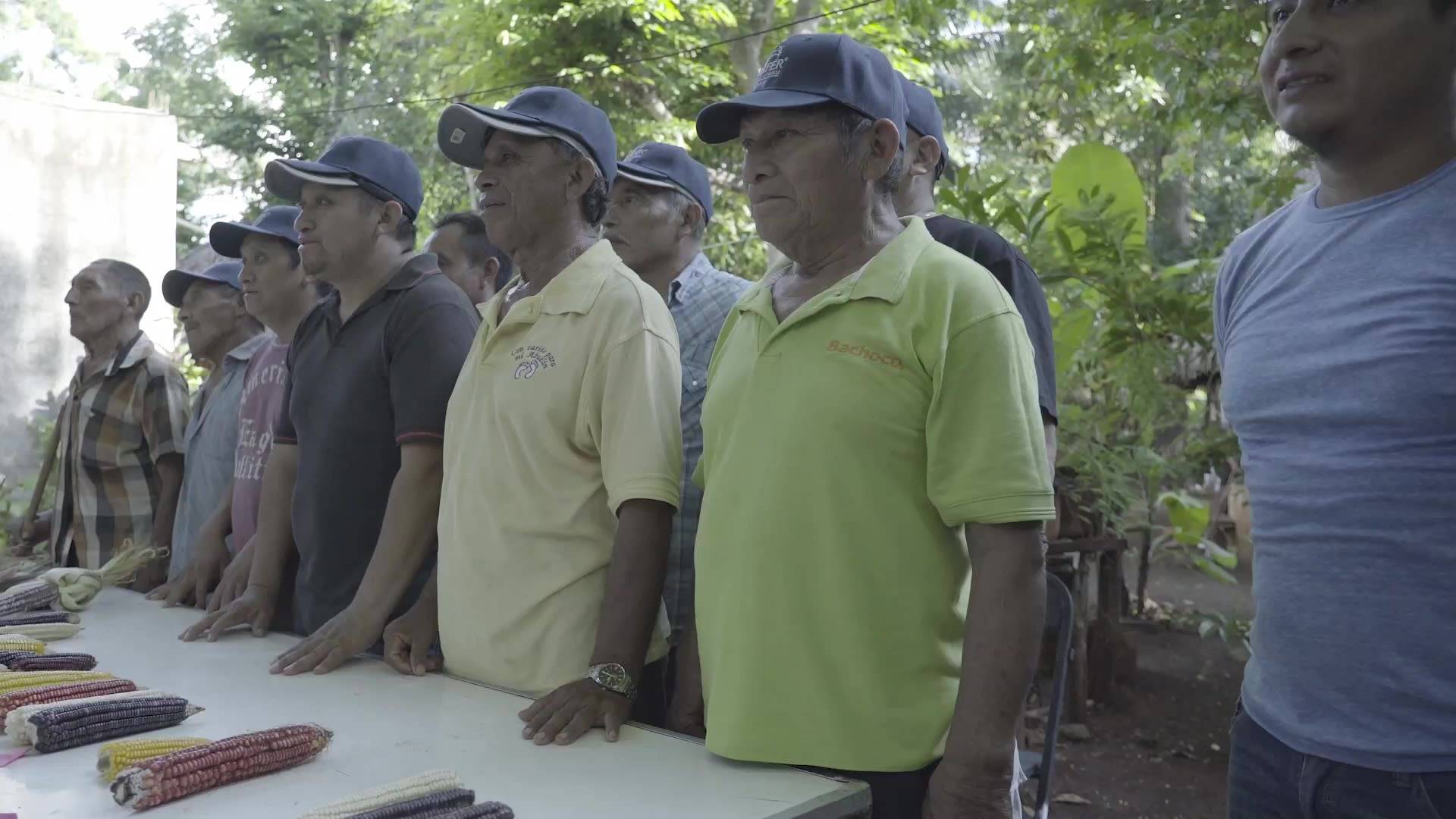
In a small backyard in the rural community of Xoy, on Mexico’s Yucatán peninsula, a group of 20 farmers gather in the shade of banana trees to inspect a selection of corn cobs.
Some of the cobs are the traditional light-yellow hue of the criollo variety. Others are a deep purple or vibrant orange. One, known as Pish Christo, or “Blood of Christ,” has yellow kernels splattered in red streaks. All of them are native maize — and this kaleidoscope of corn is the lifeblood of these farmers, who call themselves the Seed Guardians.
The Seed Guardians, a group of 150 total farmers from surrounding communities, are committed to collecting and preserving the genetic diversity of native corn species in their region. Formed over two decades ago, the group meets once a month to plan, strategize and share experiences in a concerted effort to selectively breed the best adapted varieties of native corn in their communities.
“Here in Xoy, there would be no people, no sustaining our families, if it weren’t for the milpa — our fields — and the income that comes from it too,” said Ricardo David Kumul Canul, a 61-year-old farmer, who has been a Seed Guardian for 17 years and is currently supported by Heifer’s Milpa for Life project.

Ricardo David Kumul Canul, a 61-year-old smallholder farmer, proudly presents the diversity of native corn from his community.
Ricardo David Kumul Canul, a 61-year-old smallholder farmer, proudly presents the diversity of native corn from his community.
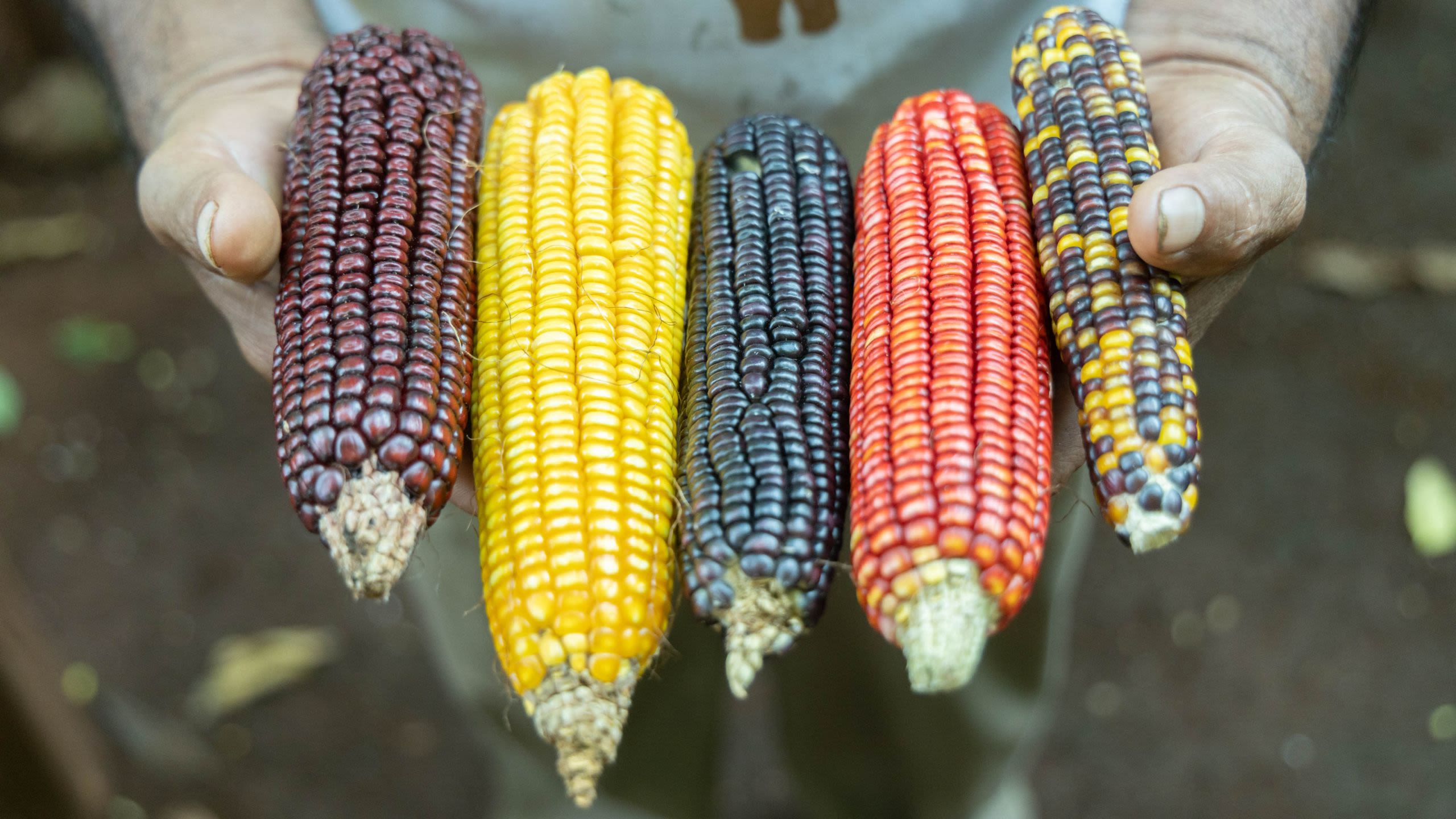
For Ricardo and his fellow Seed Guardians, this work is not simply a matter of diet; corn is imbued with both a cultural and spiritual significance, particularly for Mexico’s Indigenous population.
Mayan mythology holds that people were created from corn itself, and Indigenous farmers have long practiced the milpa method of agriculture — cultivating corn alongside complimentary crops like beans and squash on small lots in the subtropical forest ecosystem — for at least 7,000 years.
Saving the seeds doesn’t just protect the genetic diversity of these native corn varieties but also contributes to improved resilience for smallholders like Ricardo: their established seed bank helps them weather both climate and economic shocks.
“Hurricane Isidore affected us significantly,” Ricardo recalls, citing the 2002 tropical cyclone that wrought widespread damage and flooding across Mexico, Cuba and the United States.
“We lost all our animals, all our crops for consumption. We had to start at zero again after the hurricane. The only thing we could recover was the seeds.”
Mexico's Yucatán peninsula lies in the path of many Atlantic hurricanes, which increase in frequency and intensity annually from June through November, threatening the livelihoods of the region’s farmers. And with last year’s arrival of El Niño, a climate pattern that brings warmer sea temperatures to the Pacific Ocean and triggers extreme weather events across the globe, there is much uncertainty about the livelihood integrity of farmers like Ricardo.
“Another problem we face in the field is a lack of rain as we don’t have an irrigation system,” said Ricardo. In the dry season, which typically runs from November through May, milpa production suffers. “Sometimes we have long periods — 15 days — without rain,” he added. “We lose the plant and work for nothing.”
Supporting farmers to earn a viable income and produce enough food to keep hunger at bay, while mitigating and adapting to climate change, is core to Heifer’s work around the world. In Yucatán, this is of particular importance as over 36 percent of the population live in moderate poverty and 11 percent in extreme poverty.
“Here in Xoy, there would be no people, no sustaining our families, if it weren’t for the milpa — our fields — and the income that comes from it too.”
Through the Milpa for Life project, which trains smallholder farmers in Yucatán and Campeche states on best practices to improve milpa productivity and household income, and sustainably manage land, Ricardo learned how to identify the most appropriate corn plants for collection and preservation, selecting the best adapted seeds for his region to build resilience in the face of extreme weather events.
“The technicians have taught us to find the middle-sized corn stalks to collect the seeds, not the tall ones,” Ricardo explained. “The benefit is if the plant becomes too tall the wind will break the stalk. So, when we see they are medium sized, and not too tall, we select them to save our seeds for next year.”
This selective breeding technique promotes improved crops for the following planting season and allows local farmers, such as Ricardo, to harvest and store only the most optimized seeds.
“Part of the effort is to preserve and increase access to native varieties,” said Immer Bello, project manager for Milpa for Life. “The farmers [select] seeds which are better adapted to the conditions. This way they also have control and access to their own seeds — and they share their seeds with other producers.”
Ricardo is just one of over 2,000 farming families currently involved with the project, which was funded by the John Deere Foundation to help farmers embrace sustainable agricultural practices, such as the use of natural fertilizers that stimulate plant growth without depleting the soil. To date, families supported by the initiative have sustainably managed over 307 hectares, about 758 acres, of the project's 540-hectare goal.
Ricardo, the Seed Guardians and other hardworking farmers are on the front lines of this effort.
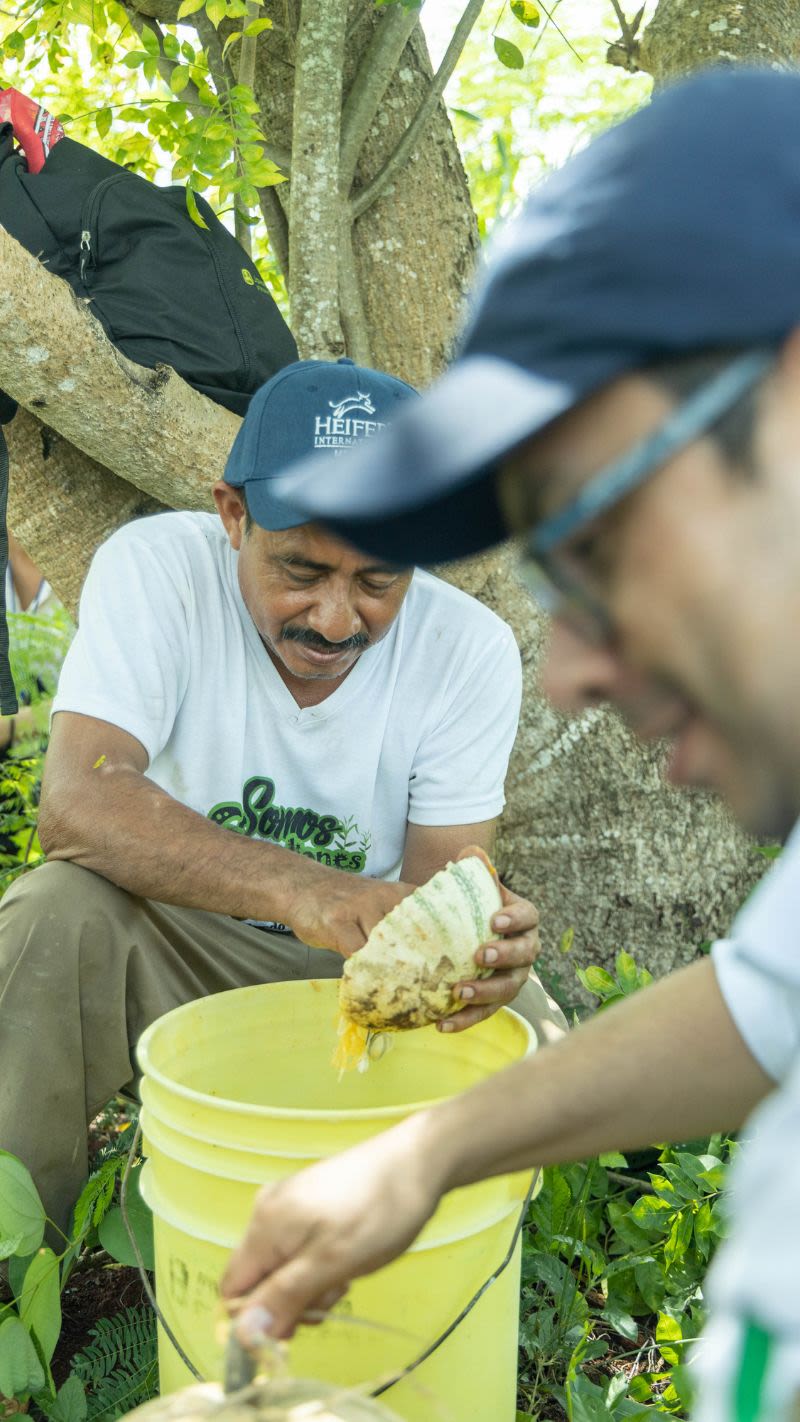
Ricardo, left, and Milpa for Life Project Manager Immer Bello extract squash seeds into a yellow bucket.
Ricardo, left, and Milpa for Life Project Manager Immer Bello extract squash seeds into a yellow bucket.
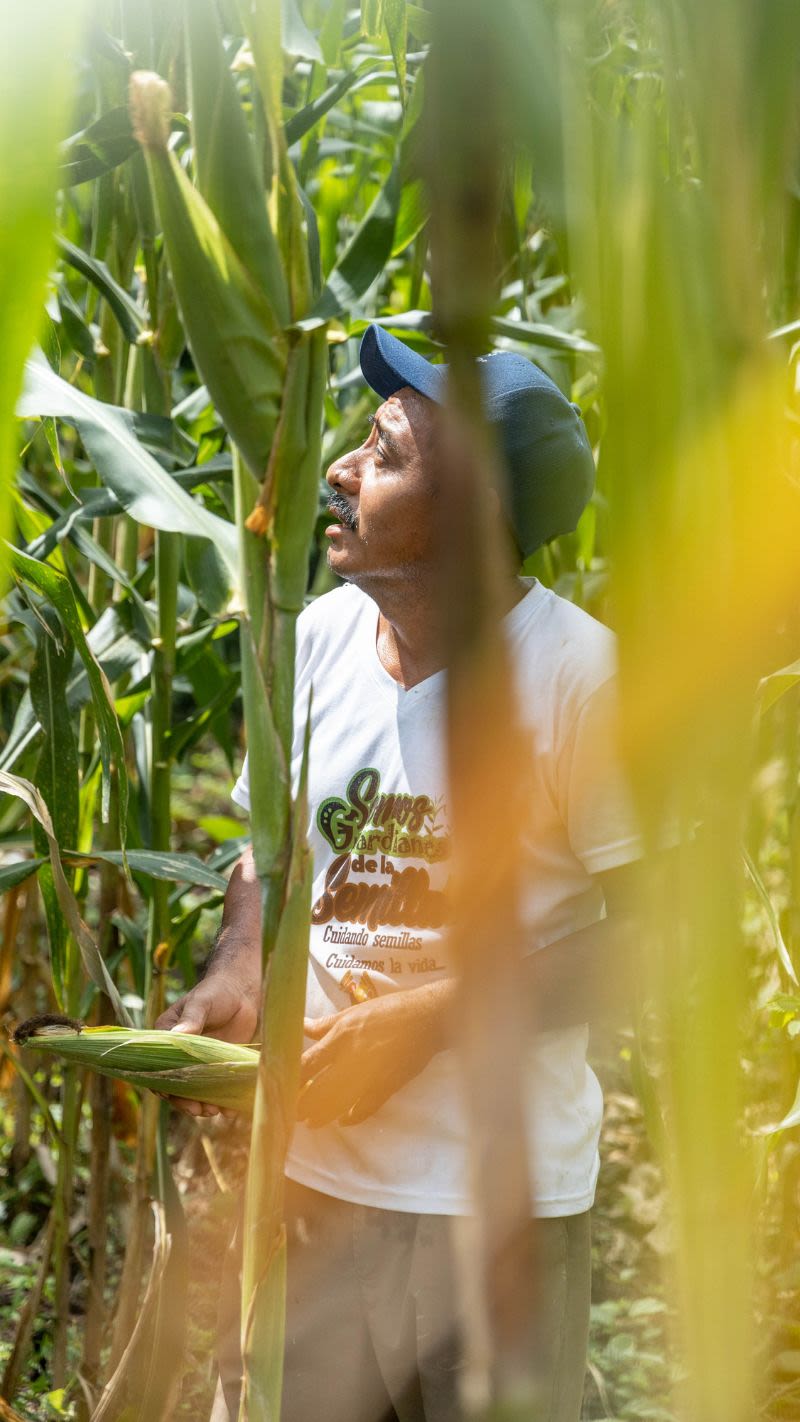
Ricardo stands among his corn fields in Xoy, Mexico.
Ricardo stands among his corn fields in Xoy, Mexico.
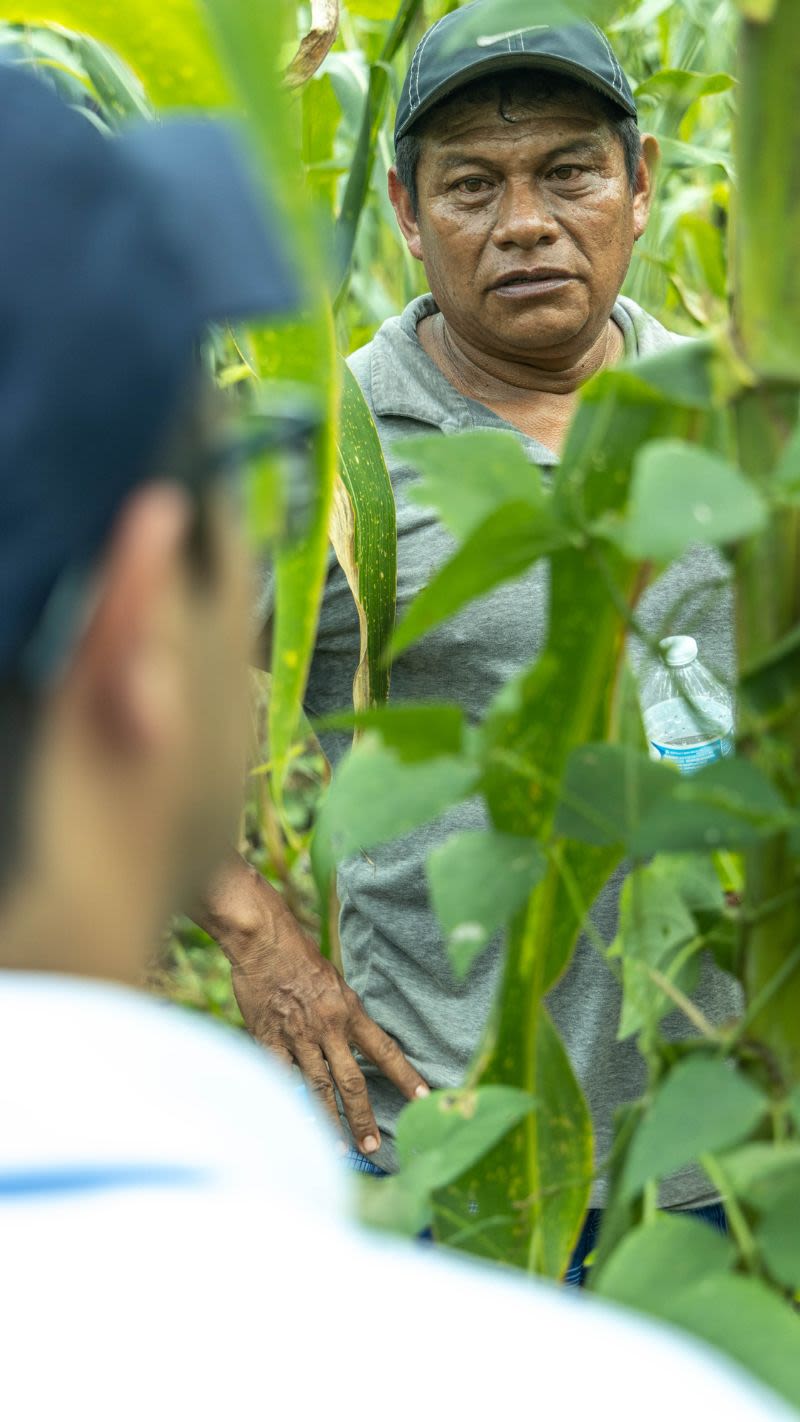
Jose Alfredo Conul, a promoter farmer through the Milpa for Life project, speaks with Heifer project manager Immer Bello on Ricardo’s farm.
Jose Alfredo Conul, a promoter farmer through the Milpa for Life project, speaks with Heifer project manager Immer Bello on Ricardo’s farm.

Well before dawn, Ricardo takes to his field, sometimes arriving as early as 3 a.m. in an attempt to avoid the baking heat of the midday sun. There, he tends to his corn, beans and squash for as many as eight hours — until 11 a.m. — before traveling home. Most days he returns to his milpa again in the afternoon, staying until the sun dips below the horizon.
“We don’t use any machines,” said Ricardo, whose father and grandfather were both proud milpa farmers. “We tend to this all this by hand. Our investment is our time and work."
What that work looks like varies by day and time of year. Sometimes it involves refreshing the pest traps he makes out of hollowed plastic containers, into which he pours a natural mixture of pineapple juice and sugar cane, to attract and kill destructive moths.
Other days, he carefully harvests seeds from his squash which he will later feed to his chickens, gently breaking the gourds open with a machete, wary not to damage the flesh too much. What seeds he doesn’t dry and roast at home to consume with his parents and grandmother, he sells at the market for up to 80 pesos per kilogram, about $5 per 2 pounds, depending on demand.
And of course, there’s the corn, which he takes great pride in coaxing from high-quality native seed to plants over 3 meters, or 10 feet, in height.
In the shadow of an unpredictable climate, these Indigenous seeds, meticulously cultivated by Ricardo and the other Seed Guardians to grow well in current conditions, are the connecting thread between a vibrant history and a resilient future. Once mature, the towering stalks are the foundation of the harvest he relies on to feed his family.
“My greatest satisfaction is to work hard,” said Ricardo, who, with Heifer’s support, has also begun diversifying his production with a backyard poultry flock that provides his household with eggs and extra income to withstand unexpected crises.
“The milpa benefits us significantly,” he added. “We live off our production.”
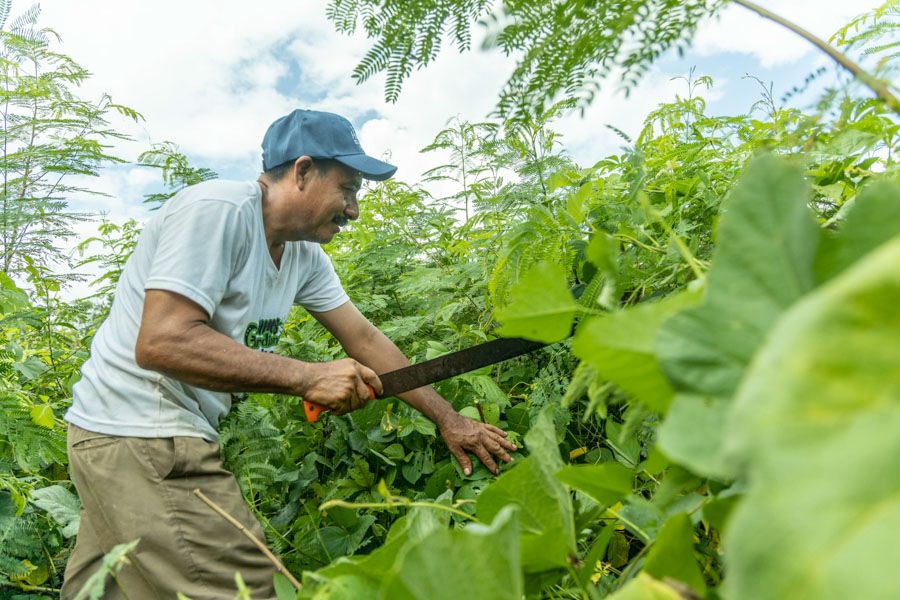
Ricardo uses a machete to clear an area to harvest squash.
Ricardo uses a machete to clear an area to harvest squash.
“We don’t use any machines. We tend to this all this by hand. Our investment is our time and work.”

Ricardo feeds squash rinds, which are a healthy treat for chickens, to his flock in Xoy.
Ricardo feeds squash rinds, which are a healthy treat for chickens, to his flock in Xoy.
Get Involved
Caring for the Earth takes a global village. Sign up for email to stay informed about Heifer's work and get more stories of impact delivered right to your inbox. Or, make a gift to help farmers around the world build climate resilience while improving their livelihoods and protecting the environment.











